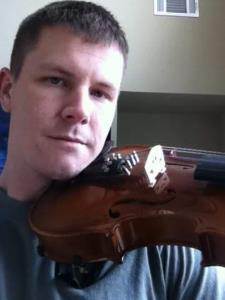
Geoffrey U. answered • 12/01/15
Tutor
New to Wyzant
History/Anthropology/Government/Strategic Policy
Depending on which view you take, and in which social aspect you're looking at it from, there are a number of relevant themes that emerge during the Renaissance that stem from new ideas of a philosophical pursuit of knowledge. The beginning of the Renaissance is often attributed to the end of the Bubonic Plague, 1346ish-1349ish, depending on which part of Europe you're talking about. As a result of the Bubonic Plague (though some say foreshadowed by policies of Frederick II), there was huge decrease in population density. On the psychological level, people started appreciate life in a different way because people were no longer surrounded by constant death. As a result of the reemergence of psychological "hope", people invested their time in things other than prayer, fear, flagellation, and fleeing the Pestilence. People began to put forth an effort into other elements of their lives. Though it is a bit anachronistic, Machiavelli is attributed with the idea of "Virtu," and that idea, though expressed by him some time later, a good starting point for understanding the new approach to thinking that man took during the Renaissance. As the previous post suggests, there was a definite concentration on identifying with the pursuit of knowledge outside the Papal realm. A great deal of superstition and religious zealotry would remain during the Renaissance, but people began to espouse new ideals that existed separate from Catholic dogma, though often times intermingled with it, logically or not.
Art- Techniques change drastically. As the Italians began to embrace a return to what they saw as the apex of human civilization (the Classical Eras, as we sometimes know them) they began to appreciate the minute detail that we see in ancient sculpture and painting. We see an emphasis on perspective, realism, and an increase in dramatic flair in painting. We also see representations of Renaissance values in the artwork. A perfect example of art reflecting culture in the Renaissance is the painting of Federigo Da Montefeltro in his study (just Google it, it'll pop up). It shows him with his Bible, in a study, with a sword, a helmet, and a great number of books. It shows that knowledge, faith, and military prowess were the then Duke of Urbino's most important qualities.
Religion- With the new awakening of ideas from the ancient cultures, people started to reevaluate their perspectives on religion. During the Mediaeval period, people observed strict dogmatic adherence to Roman Catholicism. It can be argued that the constant state of war the developed in Italy made the grip of the Papal State on Europe loosen a bit. At the time, bands of Masnada (mercenary bandits) were returning from the Crusades, and found a pretty nice home in Italy. These turned into the Condotierri (contracted mercenaries) armies that began to run roughshod over Italy. Their wars were brilliantly executed, in most cases, and the largest purses were the best served lords. With the people of Italy and ultimately the rest of Europe beginning to embrace more anthropocentric (people-oriented) perspectives, knowledge of the world became more important. This would ultimately lead to Reformation, Counter-Reformation, and Protestantism. Worldviews shifted toward possibilities outside of what the Pope dictated.
Politics- As with religion, the reemergence of old ideas challenged status quo. The writings of Greeks (about Athenian Democracy, the Peloponnesian War, and the period of Theban Ascendancy) and Romans (about the early Republic, the lives of great Romans, and the bloody transition from Republic to Empire) made people reevaluate the way they were led by their governments. We see the emergence of statism, as people begin to ethnically identify more strongly with their state and their monarchy, versus regionalism at the vassalhood level, and we also see repeated failures of the Papacy and the Holy Roman Empire to maintain stability of life. The Hundred Years' War was raging throughout the 14th Century and into the 15th. When that huge war was over, the cultural identity of England and France became significantly stronger, so much so that national languages had noticeable dilectual changes. The emergence of City-States (a direct reflection of the Classical world) and ultimately the consolidation of powerful national monarchies sum up the political climate, until those national monarchies reached the limit of their practical utility toward the end of the Renaissance, when a series of huge wars erupt, and the Early Modern era begins with the onset of nationalism.
Social Structure- War, disease, and famine eliminated the population of serfs that served the manors. With the decline the population of serfs came economic insolvency for the manors, and ultimately, feudalism. The focus on education, the invention of the printing press, the signing of the Magna Carta, and the the Classical ideals of people being involved in their system of government all happening in disparate times and locations give us an overview of just how widespread the decline of feudalism was, and how social and cultural identity changes led to new ideas of government. These new ideas didn't have enough power to challenge the monarchies for decades in some cases, and centuries in others, though.
I hope it helps.




